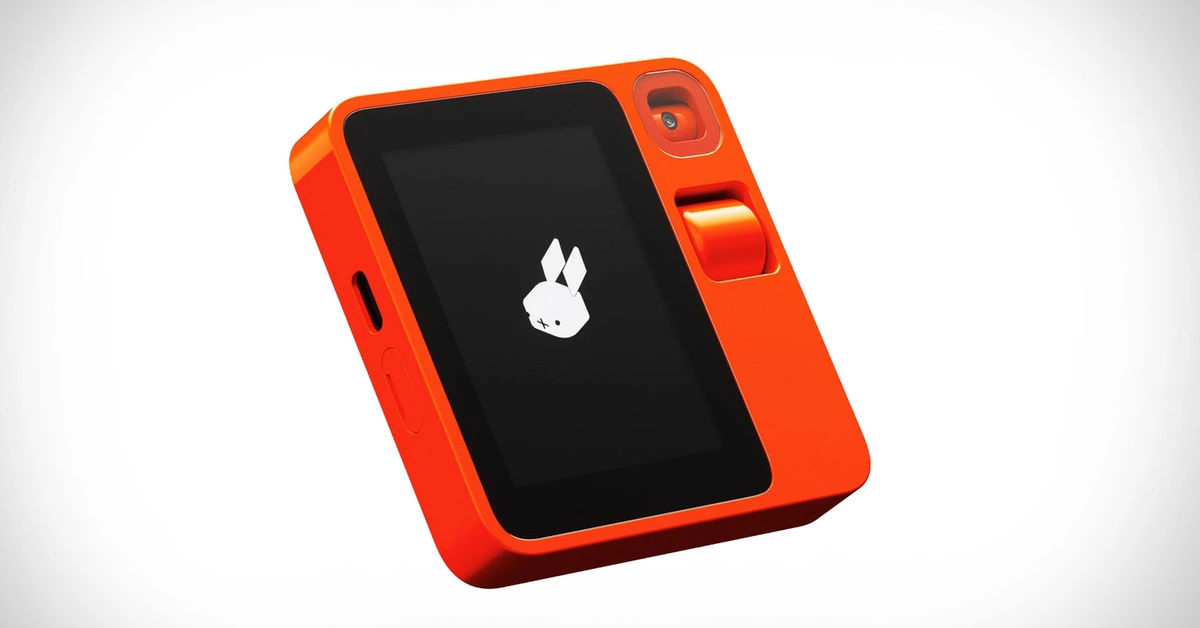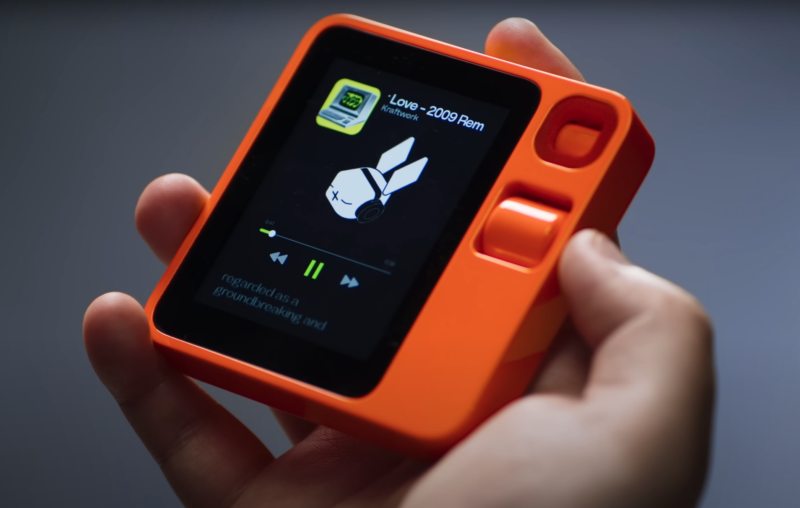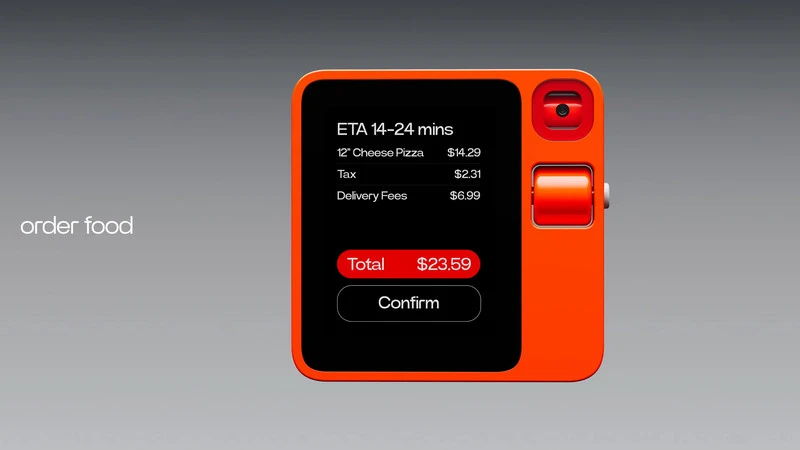In the dynamic realm of artificial intelligence, Rabbit, under the leadership of CEO Jesse Lyu, has unveiled the R1, a game-changing standalone AI device priced at $199. With the initial 10,000-unit run sold out, the Rabbit R1 has captured the imagination of tech enthusiasts. This article delves into the device’s features, exploring its potential to reshape the future of AI integration.

Rabbit R1 – A Blend of Form and Function
The R1 has a retro design that resembles ’90s handheld TVs, but it also has a modern touch.. The 2.88-inch touchscreen, a rotating camera, and a user-friendly scroll wheel/button interface contribute to its compact half-iPhone size. Sporting a 2.3GHz MediaTek processor, 4GB of memory, and 128GB of storage, the R1 promises a seamless user experience within its rounded body, a result of collaboration with design firm Teenage Engineering.
The device is surprisingly light and tactile, clicky buttons showcased its impressive hardware. Designed to fit comfortably in hand, the R1, though prone to fingerprints, presents a visually appealing and ergonomically sound gadget.
Rabbit OS – The Heart of the Innovation

What truly sets the R1 apart is its software – the Rabbit operating system, Rabbit OS. Departing from the conventional large language models, Rabbit OS relies on a Large Action Model (LAM). Lyu envisions this as a universal controller for apps, simplifying interactions across diverse platforms. The idea mirrors virtual assistants like Alexa, offering a unified interface for various tasks.
Rabbit OS acts as a bridge, connecting users to a variety of services through a single interface. Its control spans from music and transportation to video chats. The on-screen interface categorizes tasks into cards, providing an intuitive experience. Lyu emphasizes that the screen’s purpose is to empower users to verify the model’s output. Rabbit OS, with its unique architecture, aims to revolutionize how users engage with applications.
Innovative Training Mode

Rabbit adopts an innovative approach to app integration. Instead of relying on traditional APIs and developer support, Rabbit OS was trained by humans interacting with popular apps like Spotify and Uber. The Large Action Model (LAM) learns the nuances of app usage, recognizing icons, confirming orders, and navigating menus. The R1 also features a dedicated training mode, allowing users to teach the device specific actions. For instance, guiding the R1 through a Photoshop task enables it to replicate the process autonomously.
The R1 extends beyond the realm of conventional voice assistants. The Rabbit Hole web portal provides a centralized hub for users to log into various services, simplifying access. The device’s support for a training mode ensures personalized interactions, tailoring its capabilities to the user’s preferences. This innovative approach positions Rabbit OS as a potential universal solution for a myriad of applications.
In a landscape teeming with AI-powered devices, the R1 distinguishes itself as a versatile and ambitious gadget. While it does not seek to replace smartphones entirely, it hints at a future where AI seamlessly integrates into our daily lives. The Rabbit R1 serves as a bridge between traditional voice assistants and all-encompassing super apps.
Navigating the Ambiguity
Listening to Lyu discuss Rabbit OS and the R1, the device’s overarching vision remains somewhat ambiguous. Positioned primarily as a voice assistant, the R1 boasts features such as video calls and a SIM card slot. However, it transcends the traditional role of a voice assistant, encompassing a broader spectrum of functionalities. Lyu envisions the R1 as both a nifty accessory and a potential all-in-one solution for various needs.
Security and Privacy Considerations
Rabbit emphasizes that Rabbit OS has been designed with security and privacy in mind. However, it’s crucial to note that the device requires users to log into their most-used services through its interface. Striking a balance between user convenience and data security will be pivotal for the R1’s success.
Preorder and Shipping Details
The R1, available for preorder, is expected to start shipping in March. Lyu expresses optimism, even suggesting that the R1 might hit the market before competitors, such as Humane’s AI Pin.
Conclusion
In a market saturated with AI gadgets, Rabbit R1 stands out as a potential game-changer. While its immediate impact may not replace smartphones, it offers a glimpse into a future where AI seamlessly integrates into our daily lives. The R1, with its innovative Rabbit OS, has the potential to redefine how we interact with technology. As preorders for the second shipment open, the anticipation builds, marking the potential emergence of a paradigm shift in AI-driven technology.
FAQs:
1. What is Rabbit’s R1?
Rabbit’s R1 is a $199 standalone AI device designed to revolutionize user interactions with a unique operating system.
2. How does Rabbit OS work?
Rabbit OS relies on a Large Action Model to serve as a universal controller for apps, simplifying tasks and enhancing user experience.
3. What sets the R1 apart from other AI devices?
The R1 stands out with its innovative hardware, Rabbit OS, and a training mode for personalized interactions, offering a versatile experience.
4. Can the R1 replace smartphones?
While not aiming to replace smartphones, the R1 provides a glimpse into a future where AI seamlessly integrates into our daily lives.
5. How does Rabbit ensure privacy and security?
Rabbit emphasizes designing Rabbit OS with security and privacy in mind, although users are required to log into services through its interface.









